What Kind Of Animals Live In The Grand Canyon
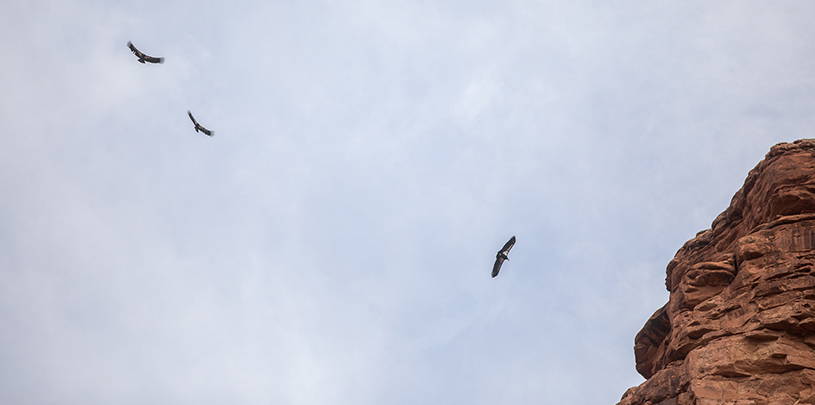
Ed Moss
 past Lisa Winters, Enquiry and Stewardship Volunteer Coordinator
past Lisa Winters, Enquiry and Stewardship Volunteer Coordinator
From ponderosa pine trees and Kaibab squirrels on the n rim of the Thou Canyon to prickly pear cactus and bighorn sheep along the Colorado River, life in the mile-deep chasm spans across forests, deserts, and streams. Only having a national park for a home doesn't automatically mean these species are rubber. Air and dissonance pollution, burn down suppression, climatic change, invasive species, and dam operations continue to challenge the way that native species live.
Today, Endangered Species Twenty-four hour period, we pay tribute to a few of the Grand Coulee'southward rare species.
Humpback chub
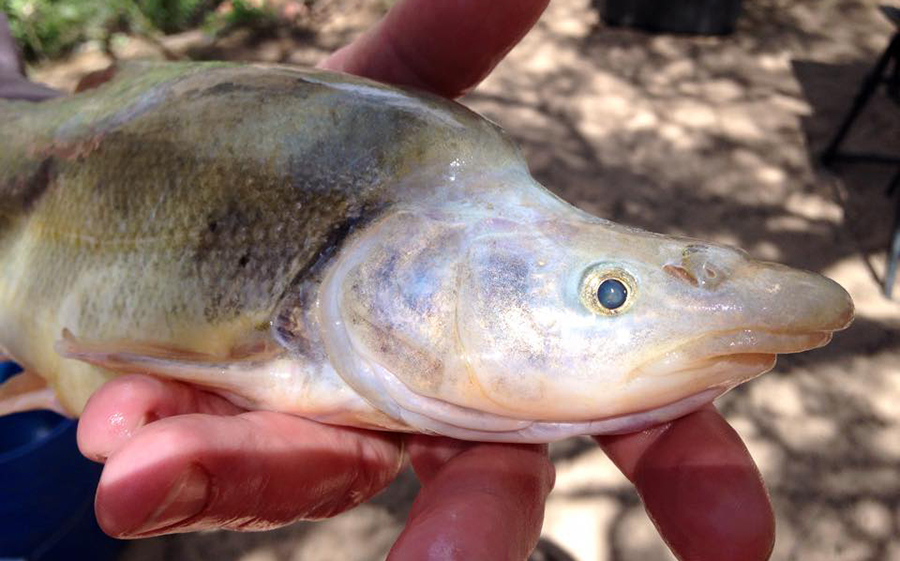
Status: Endangered
Once prevalent throughout the Colorado River Basin, the humpback chub was federally listed equally endangered in 1967 due to dams and h2o diversions. Prior to the construction of Glen Canyon Dam, this desert fish lived with huge spring floods and muddied waters, happily feeding on insects and avoiding the largest Colorado pikeminnow predators. Now, common cold, clear water is steadily released from the depths of Lake Powell through Glen Coulee Dam, and non-native rainbow trout compete with them for resources. Y'all can still notice this silvery minnow, known for the fleshy hump behind its caput, around the Niggling Colorado River near the confluence with the Colorado River.
Kanab ambersnail
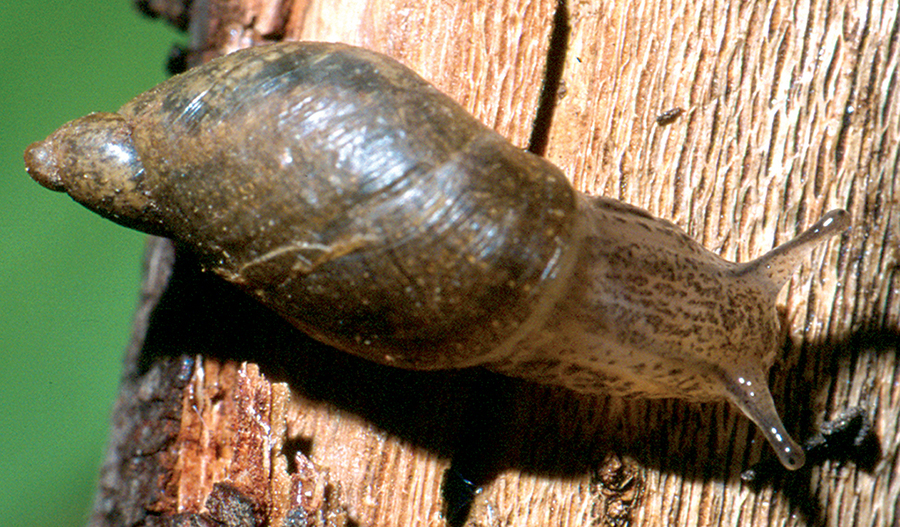
Status: Endangered
This terrestrial snail with an bister-colored shell can merely be establish in ii places: a small pond near Kanab, Utah, and a large spring along the Colorado River in the Grand Canyon called Vasey'southward Paradise. The ambersnail is dependent on wetland vegetation — information technology scrapes fungi and algae off of plants with its radula (rough natural language). Today, experimental dam releases wash abroad slow-moving snails and their habitat, unless they are kickoff moved to higher ground.
Big-eared bats
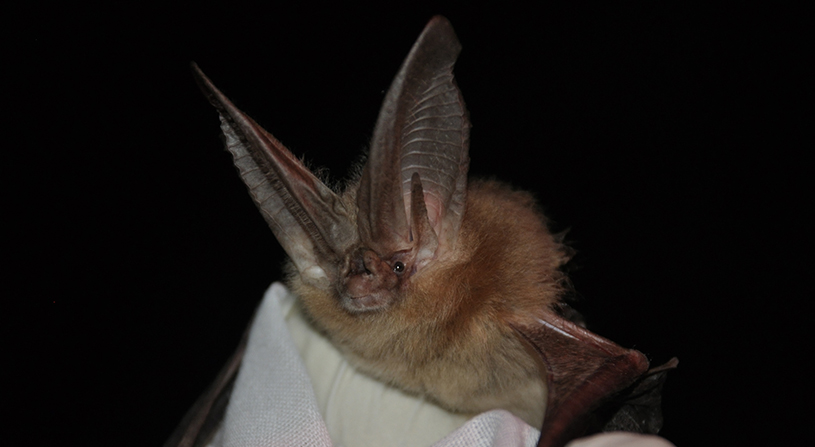
Status: Species of business
Over 20 bat species alive in the Chiliad Canyon. They use echolocation to find insects and navigate through the inky night skies. A single bat may eat 100 mosquitoes in a night! Both the Townsend's large-eared bat and Allen's big-eared bat are species of concern, likely imperiled due to white nose syndrome, a fungus that is killing millions of bats as it spreads across the state.
Kaibab swallowtail butterfly
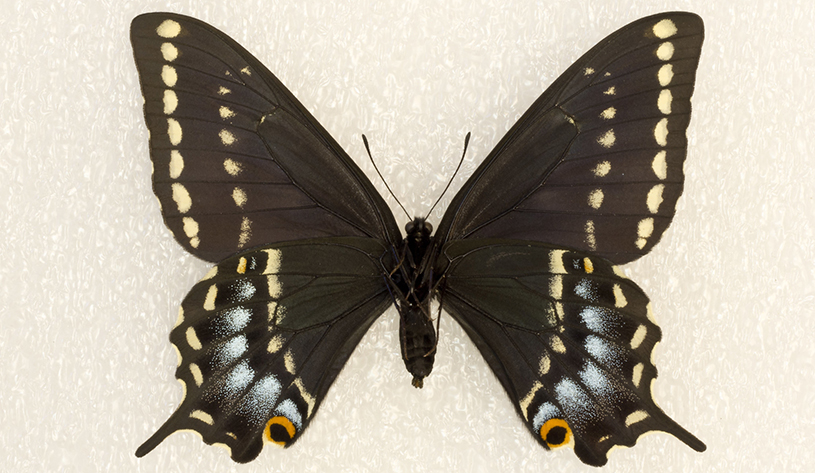
Status: Rare
The Kaibab swallowtail butterfly is found just on the north rim of the park. This big black butterfly with shimmery blue accents on its lower wings joins almost 300 species of butterflies and moths that pollinate flowering plants in the canyon. Pocket-sized but important, pollinators are in decline due to habitat loss and pesticide utilise. You can tell a moth and butterfly apart with context clues: moths are typically active at night and agree their wings down over their back, whereas butterflies are active during the day and fold their wings upright.
All species play a role
There are more threatened and endangered species in the canyon than just those listed to a higher place, and the list is changing as we continue to put pressure on the Earth and its resources.
Recently, a United nations study came out with some startling news: up to one meg species effectually the globe are imperiled and facing extinction. One one thousand thousand different plants and animals here on Earth may disappear forever — and quickly.
The impacts of species loss tin exist devastating. As a 6th grader from Flagstaff, Arizona aptly described:
…everything relies on each other, and if one animal, plant, or some part of the food spider web disappears, it can have a great impact on the environment."
Equally nosotros commemorate the last century of Chiliad Canyon National Park, we must enquire ourselves: what species do nosotros want to still be there a hundred years from now?
Source: https://www.grandcanyontrust.org/blog/endangered-species-grand-canyon-national-park
Posted by: arndtthemen.blogspot.com

0 Response to "What Kind Of Animals Live In The Grand Canyon"
Post a Comment